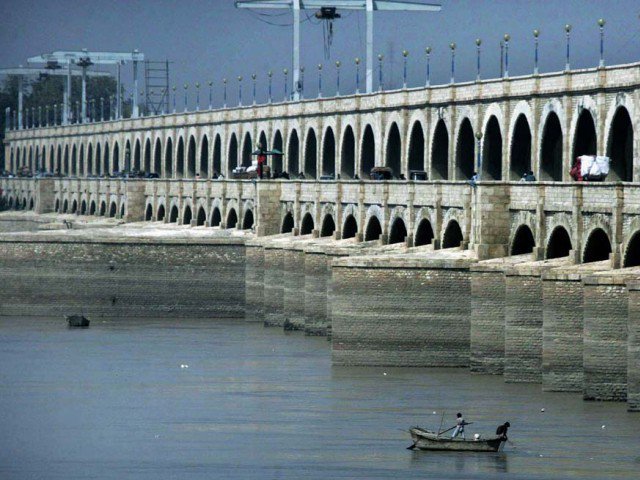
The Washington-based lending agency approved the loan under its Sindh Barrages Improvement Project aimed at rehabilitating the deteriorated infrastructure of the Guddu barrage. The country plans to invest a total $208 million on this project and remaining $20 million will be arranged by mobilizing domestic resources.
Read: Cabinet committee deliberates over privatising Neelum-Jhelum project
The credit is financed from the International Development Association (IDA), the World Bank Group’s grant and low-interest arm. It will be on standard IDA terms, with a maturity of 25 years, including a grace period of 5 years.
The rehabilitation work of Guddu barrage will eliminate possible sources of failure and potentially give the structure another 50 years of life, according to a handout issued by the WB’s country office on Saturday.
To close the gap between water supply and water demand, Pakistan is placing emphasis on modernising its ageing hydraulic infrastructure and improving water resources management. The water sector will remain a critical contributor to sustained economic development.
Read: World Bank, Pakistan sign $500m credit to support growth
According to the statistics compiled by the WB, Pakistan’s irrigation and drainage system has a total investment value of around $300 billion. Nearly 43% of the population gains employment from this system and it accounts for approximately $16 billion or one-fourth of the Gross Domestic Product (GDP).
It said due to the country’s arid climate, high susceptibility to droughts agriculture in Pakistan is predominantly irrigated, and adequate irrigation infrastructure is critical. Sindh Province, in particular, contributes 23% to the agriculture and has high potential for further productive development.
The primary function of the gated Guddu barrage is to service the irrigation of over one million hectare of agricultural land by feeding the Beghari Sindh Feeder and the Desert Pat Feeder main canals on the right side of the river and the Ghotki Feeder on the left side. The barrage is also used for river control and flood management. It is also an important transport link across the Indus River and provides cooling water for the thermal power station at Guddu.
Read: World Bank projects: Pakistan’s economic growth at 4.4%
The continued operation and management of barrages require specialized expertise, experience, decision making, and continuity of the operation, said Rachid Benmessaoud, the World Bank Country Director for Pakistan.
He said in addition to physical rehabilitation of barrage infrastructure, the project will also support the Sindh Government in training and technical assistance in procurement, financial, social and environmental safeguards for operating hydraulic irrigation infrastructure.
The project will support the gate replacement work to improve the regulation and the flow of the barrage. All the 65 main barrage steel gates, 25 main canal head regulator gates, and hoist gears including all mechanical and electrical equipment will be replaced.
This project will also finance the independent Panel of Experts, who will review, monitor, evaluate, and help guide the rehabilitation process with regards to the safety of the barrage.
The effective operation and structural stability of the Guddu barrage are important for agricultural production and for averting potential disaster during floods, said Abdulhamid Azad, the task team leader of the project.
The primary beneficiaries of the project are over 2.6 million people of irrigated land in Kashmore, Ghotki, Jacobabad, Sukkur, and Shikarpur districts of Sindh, and Nasirabad and Jafarabad districts of Balochistan, who will receive reliable supply of water.
The improved structure will mitigate the impact of floods and reduce risks of embankment breaches; since the capacity of the barrage to pass flood waters will improve.
1718870162-0/BeFunky-collage-(60)1718870162-0-405x300.webp)
1730504285-0/Martha-(1)1730504285-0-165x106.webp)




1719053250-0/BeFunky-collage-(5)1719053250-0-270x192.webp)










COMMENTS (6)
Comments are moderated and generally will be posted if they are on-topic and not abusive.
For more information, please see our Comments FAQ